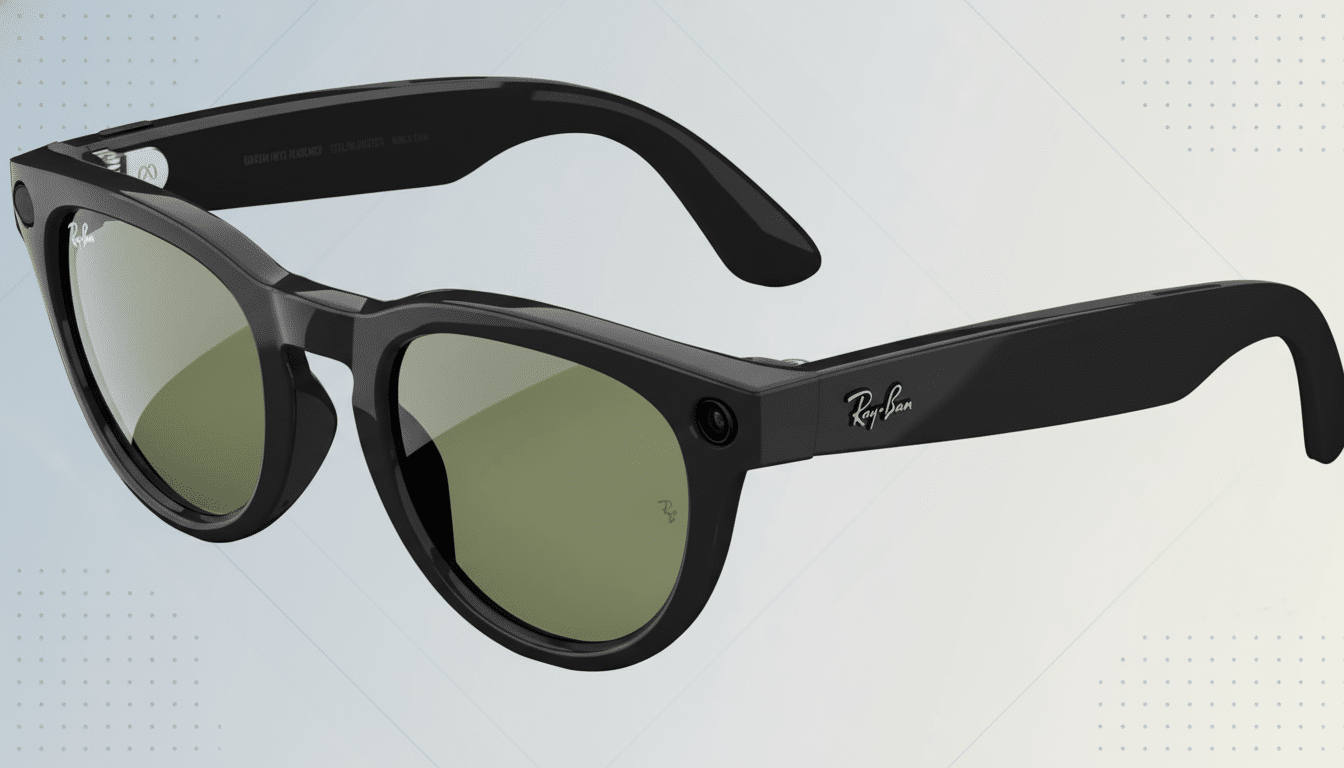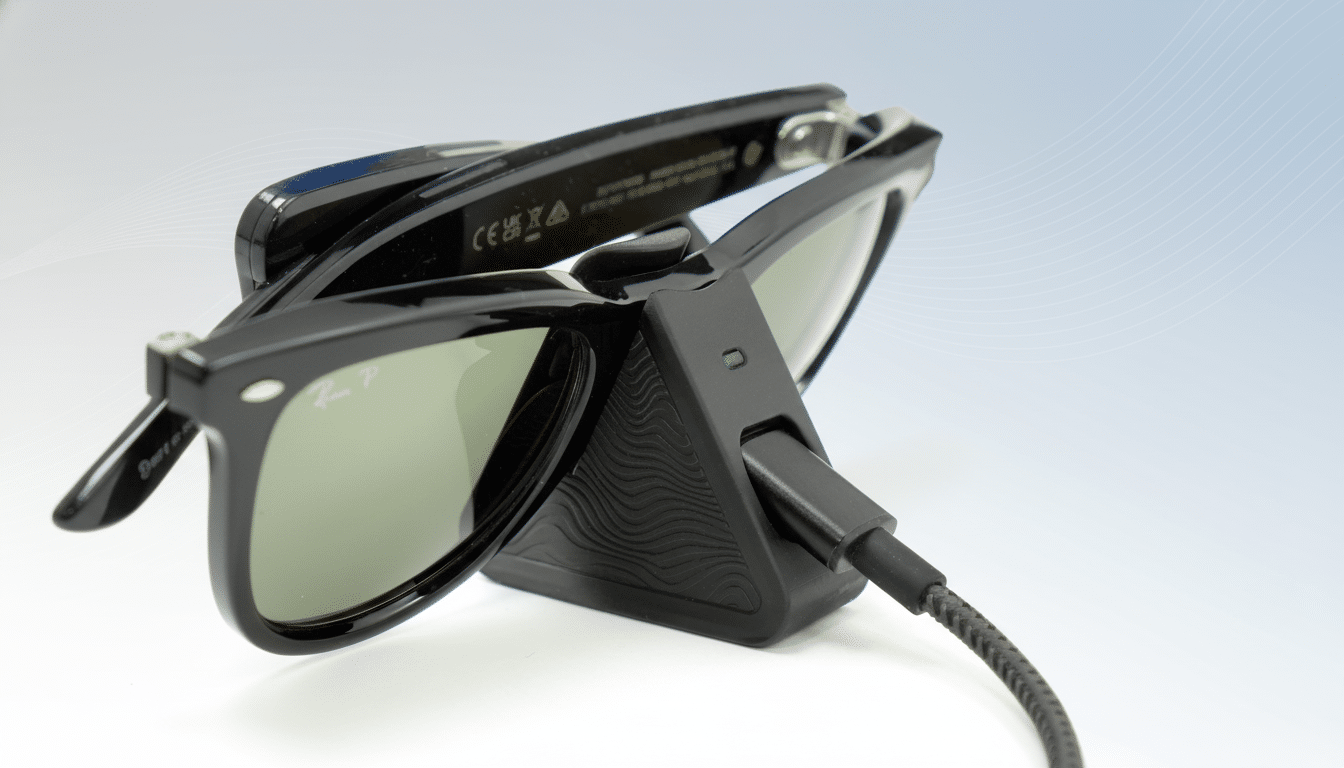Meta’s first glasses with a built-in display have landed. The early verdict from reviewers and a handful of early adopters is a cautiously optimistic “yes” — but with a notable list of caveats attached. Priced at $800, the Meta Ray-Ban Display aims to merge everyday eyewear with a discreet heads-up screen. It offers live captions, translation, messaging, and a proper camera viewfinder. While critics say the core concept mostly works, there is a lot of excitement tempered by practical trade-offs on weight, battery life, and the overall social acceptability factor.
What the Meta Ray-Ban Display Actually Delivers Today
The major feature is the transparent display positioned in the right lens. Reviewers describe it as subtle enough that bystanders don’t notice it, yet it provides a concise overlay for prompts, captions, and notifications. The display doubles as a live viewfinder for photos and videos when worn as a creator tool, and it outpaces Meta’s previous non-display Ray-Ban models.
- What the Meta Ray-Ban Display Actually Delivers Today
- Battery life and everyday use in real-world testing
- Controls and the Neural Band for precise input
- Privacy and social acceptability in public spaces
- App ecosystem and use cases before open store
- Price and early-adopter reality and value debate
- Bottom line on Meta Ray-Ban Display early verdict

Victoria Song at The Verge observed one primary utility in real-time captions, especially for disability access. The system can transcribe conversations on the fly and assist in translation. However, Song found caption accuracy dropped in loud spaces or when speakers were off to the side. Ultimately, the experience is “jaw-dropping” to those who need captions and language backups when conditions are right.
Not everyone’s eyes adapt instantly. The reviewer Tech Fowler on YouTube describes how every now and then you might get double vision for a second as your brain adjusts to two slightly different views (a common phenomenon of one-eye HUDs). Most testers adapted over time, but it’s a reminder that comfort with near-eye displays can be subjective.
Battery life and everyday use in real-world testing
Battery life tops the list of complaints. Meta’s estimated six hours of battery life is optimistic unless you leave the display mostly off, according to Engadget’s Karissa Bell. Light use pushing notifications lasted around seven hours in Bell’s testing, while display-heavy tasks like video calling or live translation saw the glasses die much more swiftly. The YouTube channel Nathie managed roughly 3.5 hours with heavier use — a wide spread that suggests endurance depends heavily on what you’re doing.
Comfort is the other sticking point. The frames weigh about 69 grams, making them feel heavy compared with regular prescription spectacles. Reviewers compared them to everyday glasses that are roughly half the weight, and some noted pressure on the bridge of the nose and cheeks after a few hours. If you’re already an avid contact-lens wearer or experience eye strain regularly, you may be more susceptible to fatigue. In other words, great for sessions; not preferable as all-day, forget-you’re-wearing-them frames.
Controls and the Neural Band for precise input
Voice commands through Meta’s onboard virtual assistant still count, but the wrist-worn neural band is where interaction becomes more precise. Bell reported near-perfect reliability in testing, where missed gestures and phantom gestures were non-existent. The gestures themselves — taps with thumb and finger, and a pressure rub with the thumb — are easy to pick up, and haptic feedback matches each action.
The band reads neural signals from your wrist, so your hands don’t have to be in front of a camera, which differentiates this approach from hand-tracked methods on other XR devices. Testers also found the band’s battery lasted about a day — not a week, certainly, but workable with a realistic, charge-each-night schedule.

Privacy and social acceptability in public spaces
The recording indicator LED is meant to put passers-by at ease, but multiple reviewers said it’s not prominent enough to be seen in bright or crowded environments. That invites déjà vu comparisons to the rocky social reception previously experienced by early smart glasses. You may be able to stow the integrated screen in a business-friendly way (for smart-glasses-as-platform, that is), but social comfort relies as much, if not more, on visible privacy cues and clear capture norms in public spaces — where Meta still has work to do.
App ecosystem and use cases before open store
Reviewers tested the hardware before a fully open app store was available, so the potential for software is still in flux.
Still, some winners quickly emerged: makers who prefer a head-up viewfinder, travelers who need translation in the moment, and people who live with live captions. If you mainly seek notifications and photos, hands-free, the smaller, less expensive non-display Ray-Ban model is probably still a better bet. The promise of the Display depends on apps that make glanceable computing genuinely useful and not just neat.
Price and early-adopter reality and value debate
The glasses cost $800, as much as a capable smartphone, but are a niche accessory and not an everyday first computing hub. That price difference influenced many decisions.
Tech Fowler said the value was hard to justify at $800 unless you have a pressing need for one of the flagship features right now. Nathie reached similar conclusions and listed the problems that need to be ironed out, namely battery life, weight, price, and social hurdles for the world at large.
Bottom line on Meta Ray-Ban Display early verdict
Early adopters agree that the Meta Ray-Ban Display is a powerful look at the future of casual, natural, glanceable computing — a HUD for modern life that genuinely assists with capture, captions, and translation today. But they also affirm it isn’t just another pair of eyewear yet.
If you are a creator, a world traveler, or someone who benefits from having spoken words available in real time, the device already provides value. And if you require long battery life, a featherweight design, and excellent privacy signaling, the next hardware cycle is likely to be even better.

